Beta alanine is a unique amino acid ingredient used in supplements to boost muscular endurance. If you've ever taken a pre workout supplement, you may have noticed your skin *tingling* a little bit. That's the beta alanine getting to work, and in this guide, we'll cover why it's used in so many sports nutrition supplements.
Why is my pre workout supplement making me tingle?!
Beta-alanine is a unique non-stimulant ingredient that many users can really feel kicking in. That tingle effect is known as paresthesia - some love it, some don't. But the real purpose of beta alanine isn't for this odd (and non-toxic) side effect. It's about endurance.
Beta-alanine is popular in sports nutrition because it has plenty of research behind it. There are several dozen studies, a few meta analyses, and research covering gains in endurance, strength, and possibly even mental focus! The fact that it's "experiential" is icing on the endurance cake.
This guide has everything you need to know about the amino acid, so keep reading to learn more! But before you do, subscribe below to get access to more ingredient research, new product and flavor launches from your favorite brands, plus some beta alanine deals that are too good to miss:
Beta Alanine – Deals and Price Drop Alerts
Get Price Alerts
No spam, no scams.
Disclosure: PricePlow relies on pricing from stores with which we have a business relationship. We work hard to keep pricing current, but you may find a better offer.
Posts are sponsored in part by the retailers and/or brands listed on this page.
You can also see the video below and check prices on Axe & Sledge Beta Alanine, the company sponsoring this article.
Below is a general overview of beta-alanine, what it is, and how it works:
What is Beta Alanine?
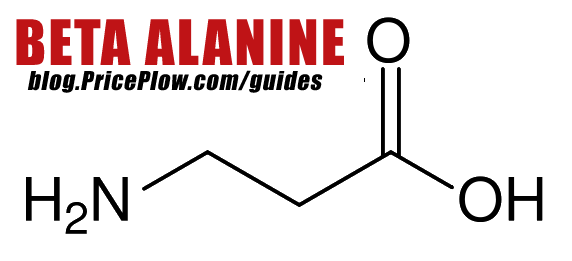
Carnosine helps your body flush lactic acid out of the muscles. Beta alanine helps you get more muscle carnosine content.
Beta-alanine is a non-proteinogenic amino acid, which means that it's not used to create proteins. It's classified as a non-essential amino acid because the body can endogenously produce it in the liver. It's naturally found in some foods, such as meat and poultry.[1] So if beta-alanine is produced by the body on its own, then why should you consider supplementing with it?
Beta-alanine + histidine = carnosine = lactic acid buffering
Beta-alanine is a building block of carnosine, so supplementing with more than your body needs can benefit your exercise performance by increasing carnosine levels in skeletal muscle.[1] Reason being, carnosine is a molecule that helps buffer lactic acid in muscles.[1] In addition to beta-alanine, carnosine is made up of a second amino acid, histidine.
Histidine is an essential amino acid, so it must be ingested via diet (and/or supplementation), and it's used to produce various proteins. Histidine is easy to obtain dietarily because it's naturally found in several high-protein foods, such as meat, fish, poultry, nuts, and seeds.
Since both histidine and beta-alanine are needed to synthesize carnosine, why isn't histidine also included in pre-workouts?

L-Histidine joins forces with beta alanine to create carnosine. Beta alanine is the rate-limiting part of this equation, so supplementing more will yield greater carnosine levels.
Beta alanine is the carnosine bottleneck
It turns out that beta-alanine is a rate-limiting precursor to carnosine synthesis. In other words, without enough beta-alanine in your system, carnosine production will not occur at the same pace, even with excess histidine.[1] Several studies have shown that supplementing with beta-alanine significantly increases carnosine levels in skeletal muscle, whereas histidine does not.[1]
Furthermore, beta-alanine is not present in as many foods as histidine, so supplementation is a much more viable option. That doesn't necessarily mean that histidine is not beneficial, it just explains why beta-alanine is included in most pre-workouts and histidine isn't. Instead, histidine is often included in essential amino acid (EAA) supplements, which are normally consumed intra-workout.
The three primary energy systems
Beta-alanine is known for its ability to increase muscular endurance. To explain how this is accomplished, we must provide an overview of carnosine, lactic acid, and energy systems.
In order to perform virtually any physiological function, especially exercise, the body requires adequate amounts of adenosine triphosphate (ATP). ATP is known as the energy currency of the cell -- cells don't have "calorie receptors" -- they deal with adenosine triphosphate.
ATP is produced through various energy systems:
- Creatine phosphate system
- Glycolytic system
- Oxidative phosphorylation
Although these energy systems are activated at different times, depending on the duration and intensity of the exercise, they work in unison to provide the body with a sufficient amount of energy. The two systems that are most active during high-intensity activities (i.e. sprinting, weightlifting, etc.) are the creatine phosphate and anaerobic glycolytic systems.
For low-to-moderate intensity activities that are longer in duration (i.e. long-distance running, swimming, or cycling) the oxidative phosphorylation system is most active. The creatine phosphate system uses creatine stores to regenerate ATP, whereas the glycolytic system mainly uses glucose, and the oxidative phosphorylation uses a combination of fatty acids and glucose.
How beta-alanine boosts muscular endurance through reducing lactic acid
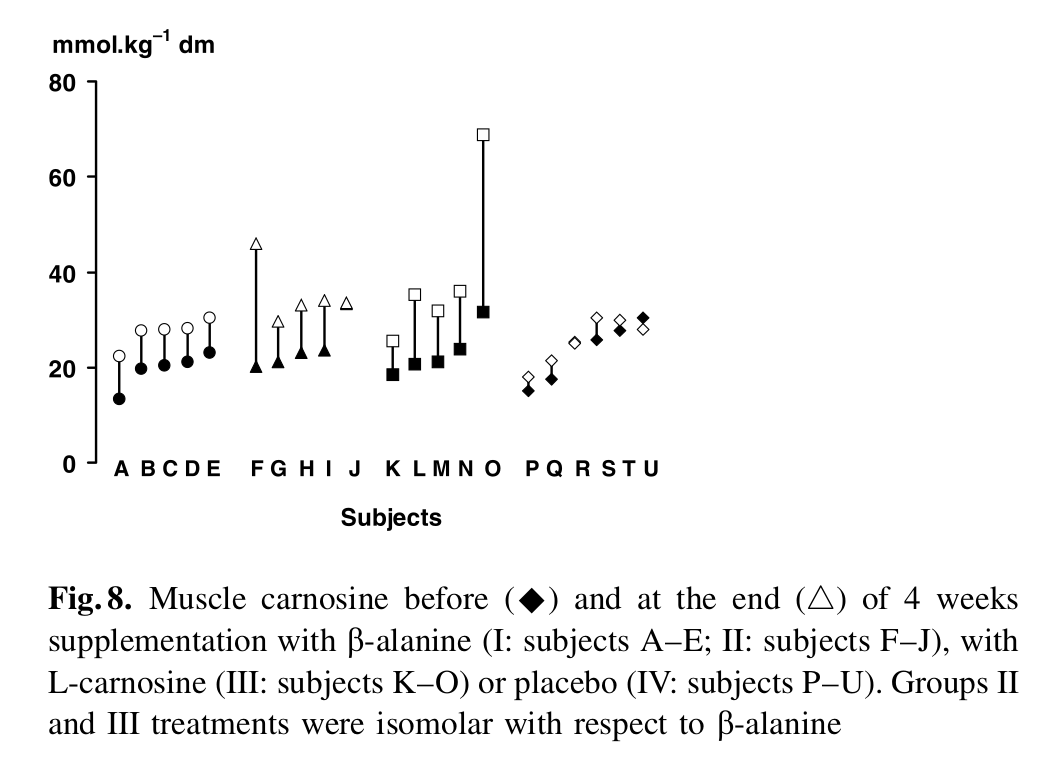
Early mouse studies showed that oral beta alanine supplementation increased muscle carnosine content.[2] Will the human research show that increases endurance? (Yes)
In addition to creating ATP, these energy systems also produce several metabolic by-products, most notably lactic acid. If you've ever felt a burning sensation in your muscle during exercise, high levels of lactic acid are likely to blame. Lactic acid lowers pH levels in skeletal muscle and allows the environment to become more acidic. Up to a certain point, this drop in pH will negatively affect various enzymes involved in the energy systems, limiting their ability to create ATP.
So the longer you can delay lactic acid buildup, the better you can perform, especially during activities that require a high level of muscular endurance. This is where beta-alanine and carnosine come in. Since carnosine is a potent lactic acid buffer, it can help delay lactic acid accumulation in skeletal muscles and maintain a normal pH level for a longer period of time.[1]
Supplementing with beta-alanine effectively increases muscular endurance by raising carnosine levels in skeletal muscle, which makes the body more efficient at clearing lactic acid and regenerating ATP.[1] Beta-alanine has other benefits as well, but this is the primary reason why it's included in nearly every pre-workout.
So how does the ingredient work in the field:
Beta-Alanine Research
Behind caffeine and creatine, beta-alanine is one of the most studied ingredients in sports nutrition. It's been shown time and again to be safe and effective at boosting performance. Moreover, beta-alanine has the potential to benefit a wide spectrum of athletes, from rowers to cyclists, weightlifters, and sprinters. Many of the studies conducted specifically use the branded form, CarnoSyn, which we'll discuss later on.
The primary benefits of beta-alanine supplementation include:
- Improves endurance
- Delays fatigue
- Enhances strength
- Reduces acidosis
- Increases mental focus
As we mentioned previously, beta-alanine achieves all of these benefits by increasing carnosine levels in skeletal muscle, allowing the body to sustain lower levels of lactic acid for longer periods of time.
There are numerous studies on beta-alanine - we're going to touch on some of the most notable ones below. But first, it may be best to cover two systematic reviews:
-
Beta alanine meta-analyses: best for 30 seconds to 10 minute events?
In 2012, researchers from Nottingham Trent University published a meta analysis in the Amino Acids journal reviewing 15 studies with 360 total participants.[3] In that study, they realized that exercise capacity was increased, especially in exercises from 60 to 240 seconds long (1-4 minutes).[3] Short burst exercises did not seem to be impacted, which makes sense given the mechanism. This led most to believe that beta alanine works best for long workout sets and mid-distance sports (eg 200 freestyle or 800-1600m races).
The 2016 meta analysis showed who beta alanine may work best for[3] - and it's generally for endurance and mid-distance activities.
In 2016, Brazilian researchers scoured additional data, analyzing 40 studies using 65 different exercise protocols in 1461 total participants were included in the analyses.[4] They noted a significant overall effect from beta alanine. They then analyzed sub-groups and found similar results as above, except that the best effects were from 30 seconds to 10 minutes long.[4] This means 100 freestyle and 400m dash are now on the table as well!
Interestingly, co-supplementation with sodium bicarbonate yielded the best results,[4] but we almost never see much sodium bicarbonate in beta-alanine-containing supplements.
Finally, the meta analysis did show studies where highly trained athletes still had benefits from beta alanine - albeit to a lesser degree than untrained athletes,[4] as expected.
Don't discount sprinters and longer endurance sports just yet!
As we will see in the studies performed later on, there have been successful trials in both sprints and longer endurance sports - especially in terms of the sprints performed at the end of a race, which can often mean the difference between a few places.
Next, moving on to the individual studies:
-
Increases in strength
One of the most recent studies conducted on beta-alanine was published in 2018 in the Journal of the International Society of Sports Nutrition. Researchers set out to determine if beta-alanine supplementation could improve the adaptive response to a resistance training program. Thirty healthy, resistance-trained volunteers were recruited for the study and randomly assigned to a placebo group (PLA) or beta-alanine (BA) group.[5]
The BA group received a total of eight capsules, each containing 800 milligrams of beta-alanine, spread throughout the day (anywhere from 1.5 hours to 3 hours apart). The PLA group followed the same protocol, but with sucrose.[5]
All participants underwent the same 5-week resistance training program. The main outcome measures of the study were:
- Average velocity
- Peak velocity
- Average power
- Peak power
- Load in kilograms in a back squat
- Incremental load
- One-repetition maximum (1RM) test[5]
At the end of five weeks, the researchers found that in conjunction with a resistance training program, supplementing with 6.4 grams of beta-alanine per day significantly increased:
- Power output
- Work volume (overall number of reps, sets, and weight lifted)
- Strength (as measured by a one-repetition maximum)[5]
Note that nobody should be claiming a direct strength increase from the supplement itself. Instead, the researchers attributed their results to beta-alanine's ability to improve users' workload.[5] After five weeks, beta-alanine allowed participants to lift more weight for more reps and sets. That added capability indirectly increased the strength in the above metrics.
-
Improves work capacity
Researchers at the University of Chichester set out to determine if four weeks of beta-alanine supplementation could increase skeletal muscle carnosine levels and total work capacity in cyclists. They recruited 25 male volunteers and split them into two groups: beta-alanine and placebo.[6]
Beta-alanine was administered each day, starting at 4 grams in week one and incrementally increasing to 6.4 grams in week four. The placebo group followed the same protocol, but with maltodextrin. Each volunteer performed a high-intensity cycle performance test at the beginning and end of the study. The researchers also collected biopsies from quad muscles to assess changes in carnosine levels.[6]
After four weeks, the study authors found that the BA group's carnosine levels increased by 58.8%. As a result, their work capacity also significantly increased compared to baseline and the placebo group.[6]
Delays the onset of fatigue
A study published in the Journal of Strength and Conditioning found that supplementing with beta-alanine not only increased work capacity by nearly 15%, but could also delay neuromuscular fatigue onset after 28 days. Researchers from the University of Oklahoma recruited 51 untrained male volunteers for a double-blind placebo-controlled study[7]
and randomly divided them into four groups:
- Placebo: received 34 grams of dextrose
- Creatine monohydrate: received 5.25 grams of creatine plus 34 grams of dextrose
- Beta-alanine: received 1.6 grams of beta-alanine plus 34 grams of dextrose
- Beta-alanine plus creatine: received 5.25 grams of creatine, 1.6 grams of beta-alanine, and 34 grams of dextrose[7]
The volunteers consumed their assigned supplement four times per day for the first six days, then two times per day for the remainder of the study. Each subject performed a continuous incremental cycle ergometry test before and after supplementation. After 28 days, the researchers found that the beta-alanine and beta-alanine plus creatine groups experienced a significant improvement in physical work capacity compared to the placebo group and creatine-only group.[7]
Beats creatine for endurance / work capacity - but we still suggest both
Interestingly, creatine didn't seem to have an additive effect in these metrics. The boost in work capacity was largely attributed to beta-alanine. The researchers concluded that beta-alanine, with or without creatine, may delay the onset of neuromuscular fatigue. They attributed this effect to beta-alanine's ability to raise muscle carnosine levels, leading to a greater capacity to buffer lactic acid during high-intensity exercise.[7]
Note that we are not downplaying creatine's capabilities in terms of other metrics, and for strength and size, we still suggest 3-5g/day supplementation, depending on size and amount of meat in the diet.
-
Enhances power output over time
A study published in the journal Medicine and Science in Sports and Exercise showed that supplementing with 2 to 4 grams of beta-alanine per day for eight weeks significantly improved sprint performance (as measured by power output) in well-trained cyclists. For this study, researchers recruited 17 volunteers and divided them into two groups: beta-alanine and placebo.[8]
The beta-alanine dose was gradually increased from 2 grams per day (weeks one and two) to 3 grams per day (weeks three and four) and 4 grams per day from week five on. The placebo group followed the same protocol but received maltodextrin.[8]
Each subject performed an incremental exercise test and simulated road race on a bicycle ergometer pre- and post-supplementation. The study's most significant finding was that the beta-alanine group saw an 11.4% increase in power output during the final sprint at the end of the endurance exercise.[8] The implication is that even during the final miles of an endurance event like cycling, beta-alanine may give users that extra boost needed to help win the race.
-
Improves speed
Three of the studies we've discussed so far were performed on cyclists, but do the results translate to other activities? Well, a study published in the Journal of Applied Physiology suggested that beta-alanine supplementation can improve overall rowing speed and performance.[9]
Eighteen elite rowers in Belgium were given 5 grams of beta-alanine or placebo over the course of seven weeks. Before and after supplementation, the researchers measured carnosine levels in volunteers' soleus and gastrocnemius (both located in the calf) muscles. They also evaluated the athletes' rowing performance using a 2,000-meter ergometer test.[9]
After seven weeks, the beta-alanine group's muscle carnosine levels increased 45.3% in the soleus and 28.2% in the gastrocnemius. More importantly, the beta-alanine group rowed 4.3 seconds faster than the placebo group, whereas before supplementation their time was 0.3 seconds slower. In summary, the study results equate an increase in carnosine levels with an improvement in rowing performance.[9]
-
Increases endurance and improves body composition
Researchers from the University of Oklahoma evaluated the effects of beta-alanine supplementation and high-intensity interval training (HIIT) on endurance and body composition in male volunteers. Using a double-blind randomized controlled trial, they recruited 46 participants and assigned them to either a placebo group (16.5 grams of dextrose) or a beta-alanine group (1.5 grams of beta-alanine plus 15 grams of dextrose powder).[10]
All subjects consumed their assigned supplement four times per day for the first 21 days, then two times per day for the following 21 days. For six weeks, each participant performed five to six bouts of HIIT, which consisted of two minutes of cycling with one minute of rest between reps.[10]
After six weeks, the study authors noted significant improvements in endurance (as measured by VO2, time to fatigue, and total work completed) and lean body mass in the beta-alanine group. Overall, the researchers concluded that beta-alanine supplementation may enhance HIIT results by further improving endurance and lean body mass.[10]
-
Boosts cognitive function; reduces mental fatigue
One benefit of beta-alanine that isn't discussed very often is its potential to boost cognitive function, which can benefit nearly anyone. A study published in the journal Amino Acids found that 30 days of beta-alanine supplementation significantly improves:
- Muscle carnosine content in skeletal muscle
- Multiple aspects of military-specific physical performance
- Cognitive performance[11]
This study was conducted on 18 soldiers from an elite combat unit. Nine soldiers received 6 grams of beta-alanine per day, while the remaining nine received a rice flour placebo. Before and after supplementation, each volunteer underwent several military-specific performance tests, including:
- 2.5-kilometer run
- 1-minute sprint
- 50-meter casualty carry
- Multiple 30-meter sprints interspersed with target shooting
- 2-minute serial subtraction test (SST) to assess cognitive function under stressful conditions[11]
The study authors found that the beta-alanine group experienced a significant increase in performance in nearly every test, including the SST. However, the researchers also reported that carnosine levels in the brain failed to change by any detectable amount. So more research is warranted to determine beta-alanine's mechanism of action in terms of boosting cognitive performance.[11]
Dosing beta-alanine & potential side effects
However, to increase muscle carnosine levels at an even faster rate, loading 6 grams per day, divided into three 2-gram doses may be even more advantageous.[1] Ultimately, 3.2g/day is generally the minimum clinical dose, but there could be benefits of reaching carnosine saturation levels faster at a dose twice that, and it's wise to space the doses out.
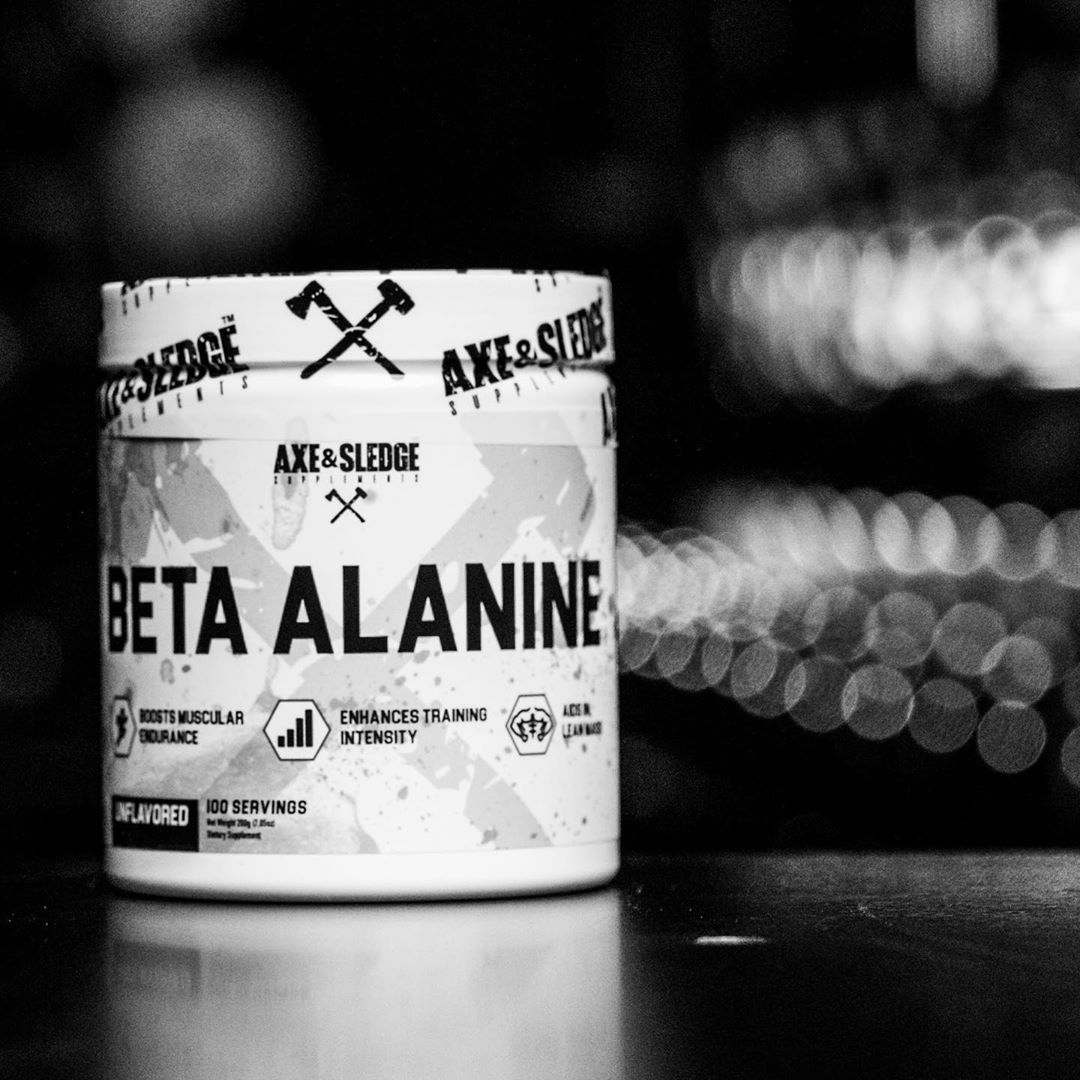
What about off-days, or when you want more beta alanine than what's in your pre workout? It's relatively cheap when taken alone.
Although beta-alanine is commonly added to pre-workout supplements, to get the most benefits, taking it daily is ideal. So on the days, you're not training, having a single-ingredient beta-alanine supplement on hand is helpful for obtaining your daily dose.
Back to the tingling...
One of the main reasons why it's strongly recommended to divide the doses evenly throughout the day is to reduce the chances of experiencing adverse effects such as:
- Paraesthesia (some users may actually like this effect)
- Rapid changes in pH
- Higher excretion rates[1]
This brings us back to the tingling sensation discussed in the introduction, and it's known as paresthesia. Paresthesia is described as an abnormal sensation of the skin that can involve tingling, numbness, prickling, or a chilling sensation.
How do I reduce these tingles?
If you want to lower the possibility of experiencing paraesthesia, even more, try consuming beta-alanine with a meal. Anecdotally, low-carb dieters, or carbohydrate-depleted users (often on an empty stomach) seem to suffer worse at first, so consider timing it with carbohydrates. After four weeks of loading (taking 4 to 6 grams per day), you've saturated the muscles, so the dose can be reduced to maintenance, which is approximately 2 to 3 grams per day.[1]
Finally, there have been supplemental ingredients such as CarnoPrime that have been developed in an attempt to reduce tingling sensation,[12] but it has limited adoption at the time of press.
Beta-alanine safety

Kick up your intensity with Axe & Sledge Ignition Switch!
The most common side effect of beta-alanine is paraesthesia, which can be mitigated using the strategies discussed above. It's typical for users to experience paraesthesia with doses of 800 milligrams or more, especially from a non-sustained-release form.[1] Research shows that this condition, when linked to beta-alanine, subsides anywhere from 60 to 90 minutes after ingestion.[1]
Another potential side effect is decreased taurine levels. Taurine is a conditionally essential amino acid that's involved in a number of bodily functions. Since taurine and beta-alanine share the same skeletal muscle transporter, beta-alanine may compete with taurine uptake.[1]
As of writing this article, there's no safety data on the long-term use of beta-alanine, but it's believed to be safe longer than one year. Anecdotally, many athletes and readers of PricePlow have been taking it regularly for over a decade at this point, and no adverse events have been reported from these "chronic" users. The likelihood of serious side effects are extremely low, especially since beta-alanine is non-essential and produced endogenously by the body,[1] and can be excreted without problem.
Forms of beta-alanine: Branded v. generic
There are two main forms of beta-alanine on the market: generic and CarnoSyn, developed by Natural Alternatives International. Both are made synthetically in a lab setting.
CarnoSyn is a form of beta-alanine that is an established New Dietary Ingredient (NDI) with the FDA and has a self-affirmed GRAS status. Moreover, it's backed by years of scientific research, as several of the studies cited above used Carnosyn specifically.
This doesn't necessarily mean that CarnoSyn is better than generic beta-alanine, but when you see CarnoSyn on the supplement facts panel, you're practically guaranteed to get a pure, quality form. Generic beta-alanine that is 100% pure is just as good as CarnoSyn, but the trick is to buy from a reputable brand that tests both their incoming raw materials and outgoing products (as the US manufacturing law mandates), and even better if they publicly share third-party tests to verify label claims (not required by the law, but optimal).
There are two types of CarnoSyn on the market — instant release and sustained release. Sustained-release (SR) CarnoSyn offers the same benefits as an instant release but it's packaged in an advanced delivery system that allows for increased dosing and better results. The two forms can be used separately, but combining instant release and sustained release supplements gives users the ability to stack their dosing for higher quantities. If you want to boost your daily intake of beta-alanine, but don't want to deal with the paresthesia, sustained-release might be a better choice.
Where to find beta-alanine
The most common place to find beta-alanine is in pre-workout supplements. Recall that supplementing with beta-alanine daily is crucial to obtaining maximum benefits, and dosing varies in these supplements, so you may need to take additional on off-days (or days where you don't take a pre workout) or to load carnosine stores quicker.
For that, we recommend picking up a high-quality stand-alone beta-alanine supplement to help fill the gaps, such as:
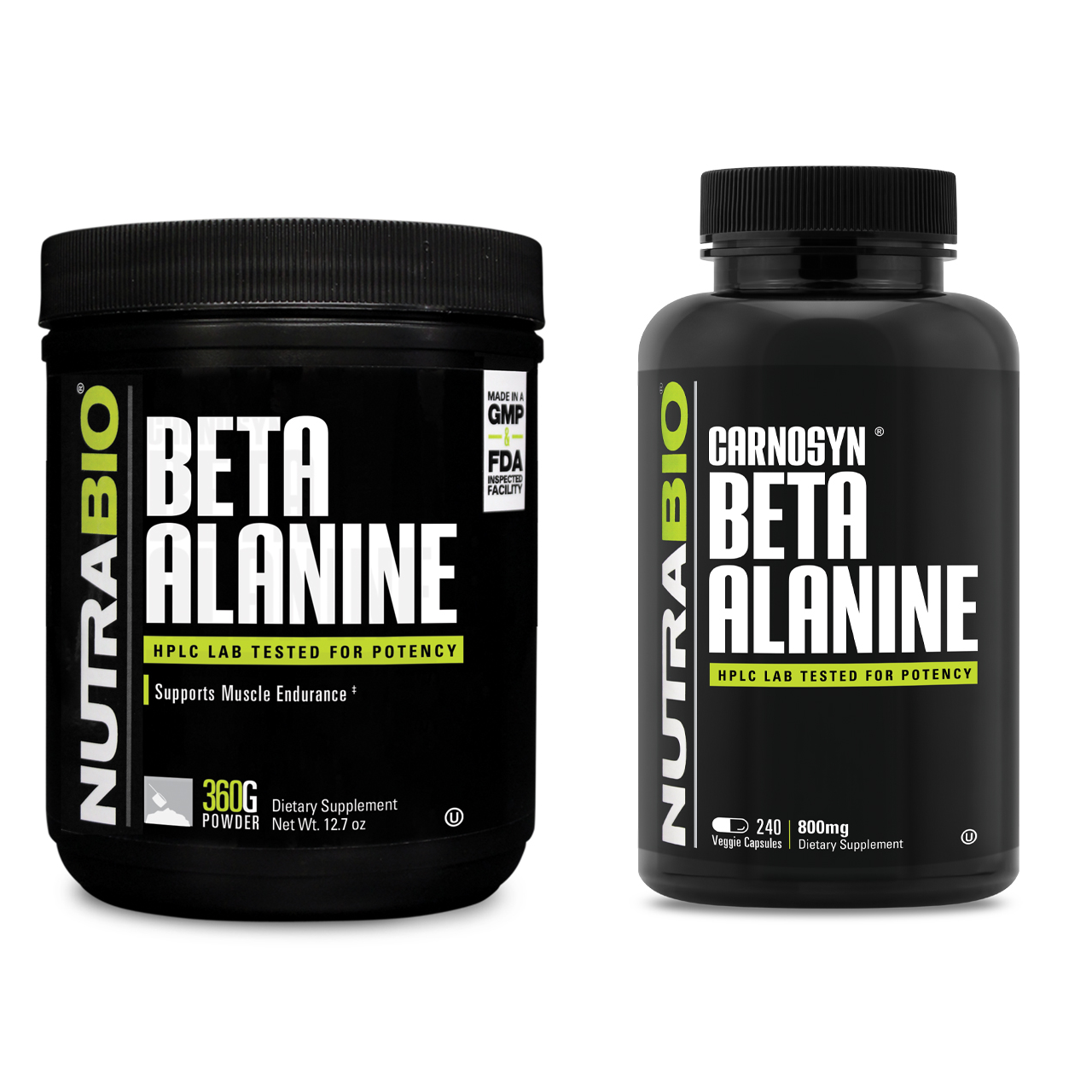
Get a trusted source of beta-alanine from NutraBio! Both the powder and capsules have 3rd-party lab tests published publicly online.
-
NutraBio Beta-Alanine (available in both capsules and powder with public 3rd-party lab tests)
Beta-Alanine: The Bottom Line
It's not very often that we come across a pre-workout that doesn't include some form of beta-alanine. Based on the literature, beta-alanine is a safe and effective ergogenic aid that offers numerous benefits, including:
- Enhances endurance, power, and strength
- Improves body composition
- Delays mental and physical fatigue
- Enhances focus and cognition
- Quickens recovery[1]
So, whether you're a bodybuilder looking to add more strength and lean mass or a runner on a mission to improve your time, supplementing with beta-alanine is worth considering.
The biggest mistake we see with beta-alanine supplementation is adherence: it should be taken daily. Some people try to avoid beta-alanine at all costs due to the uncomfortable "pins and needles" feeling it can cause, but we've addressed several ways to avoid the side effects and reap the benefits.
Oftentimes in the supplement industry, we can avoid supplements by merely eating far more red meat, eggs, and fish. Creatine, carnitine, choline, DHA, and others come to mind. But in the case of beta alanine, eating more steak and eggs may not get won't necessarily get you there, since beta alanine is the rate-limiting factor - not the histidine found in our food.
Although beta-alanine is not essential by any means, there is a substantial amount of evidence supporting its use. It's well-established that beta-alanine is a powerful muscular endurance enhancer, but we would like to see more research assessing its potential to boost cognition. Get your 3.2+ grams per day and enjoy the gains.
Axe & Sledge Beta Alanine – Deals and Price Drop Alerts
Get Price Alerts
No spam, no scams.
Disclosure: PricePlow relies on pricing from stores with which we have a business relationship. We work hard to keep pricing current, but you may find a better offer.
Posts are sponsored in part by the retailers and/or brands listed on this page.
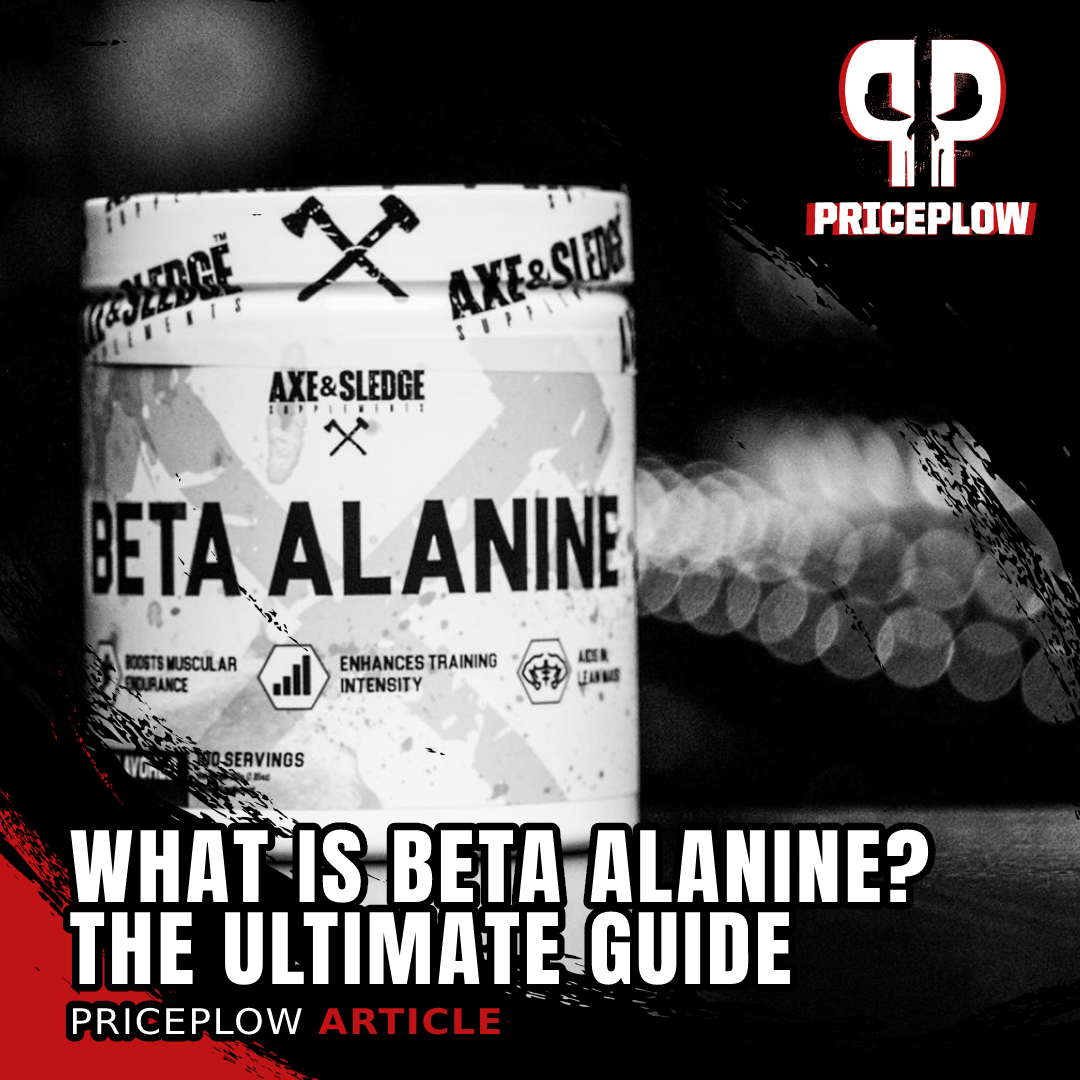

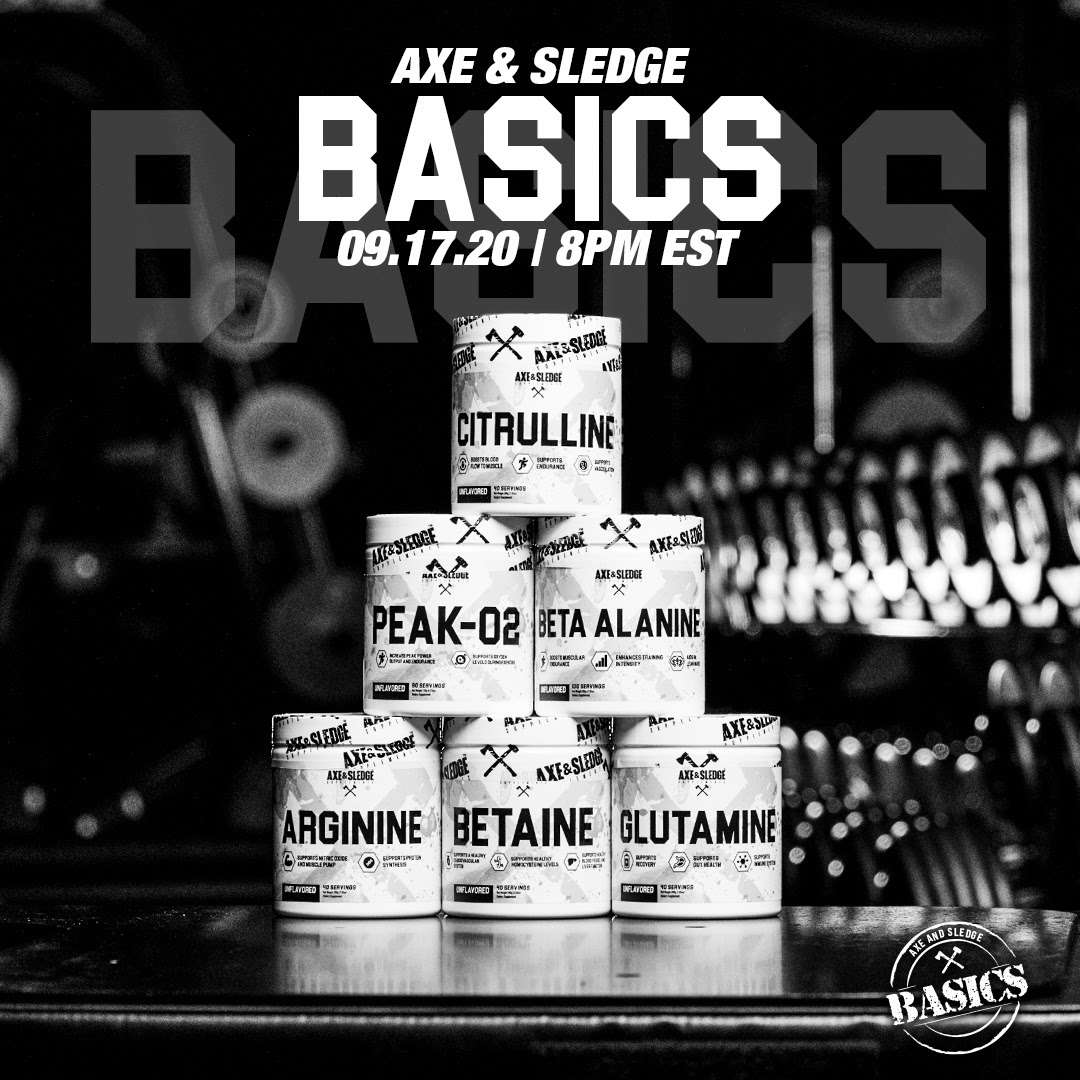
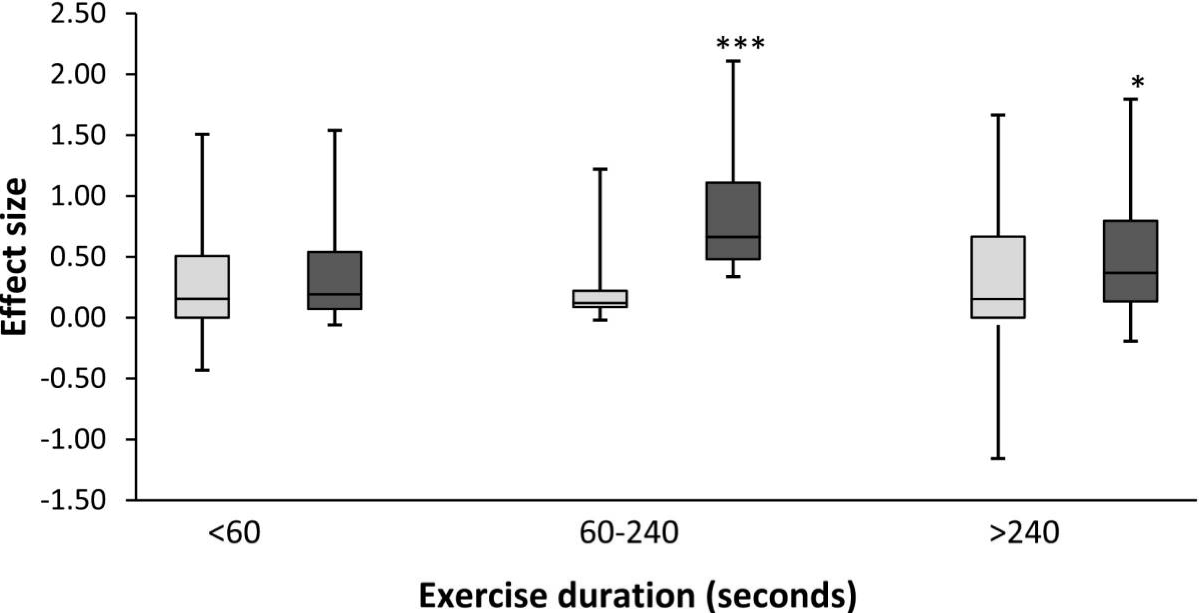

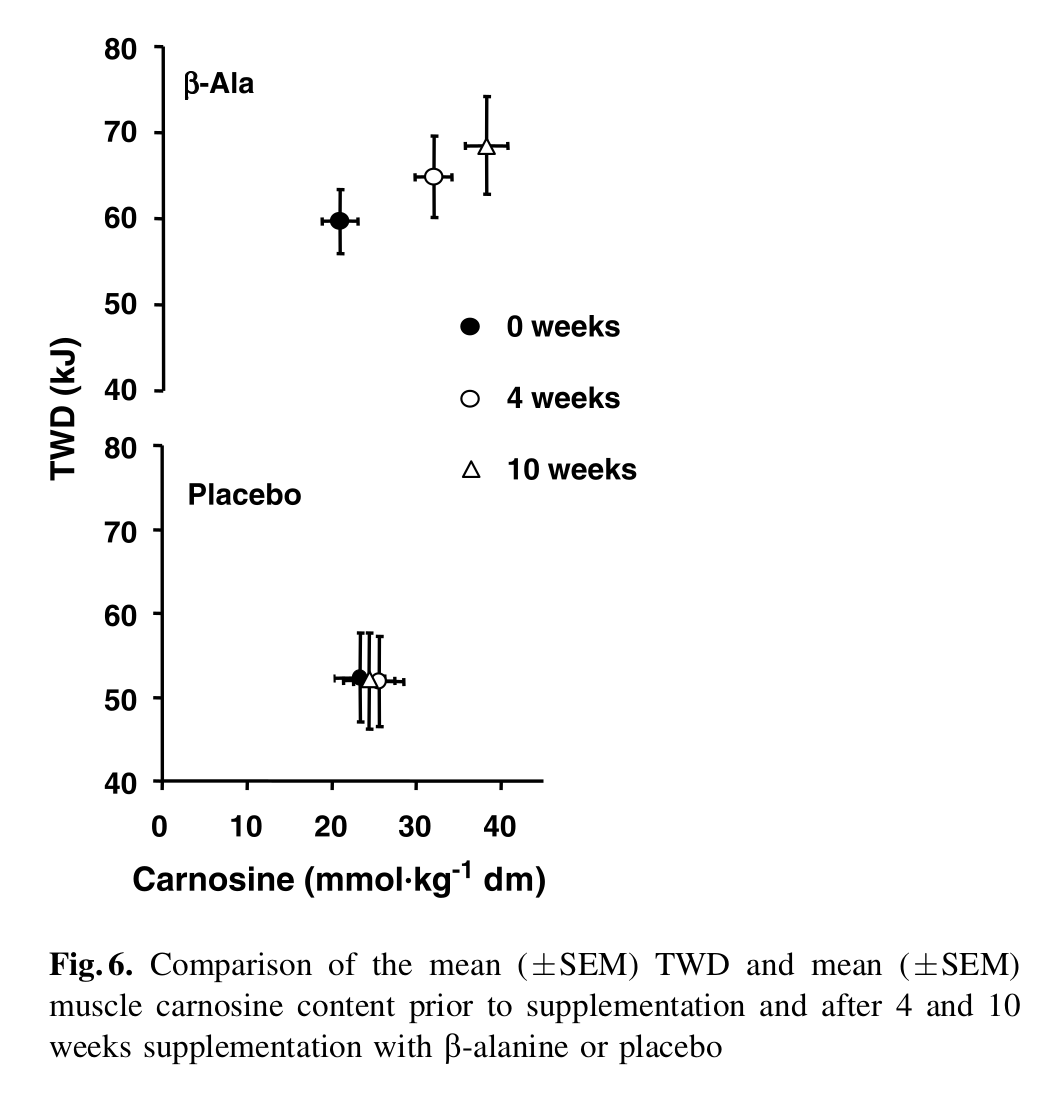
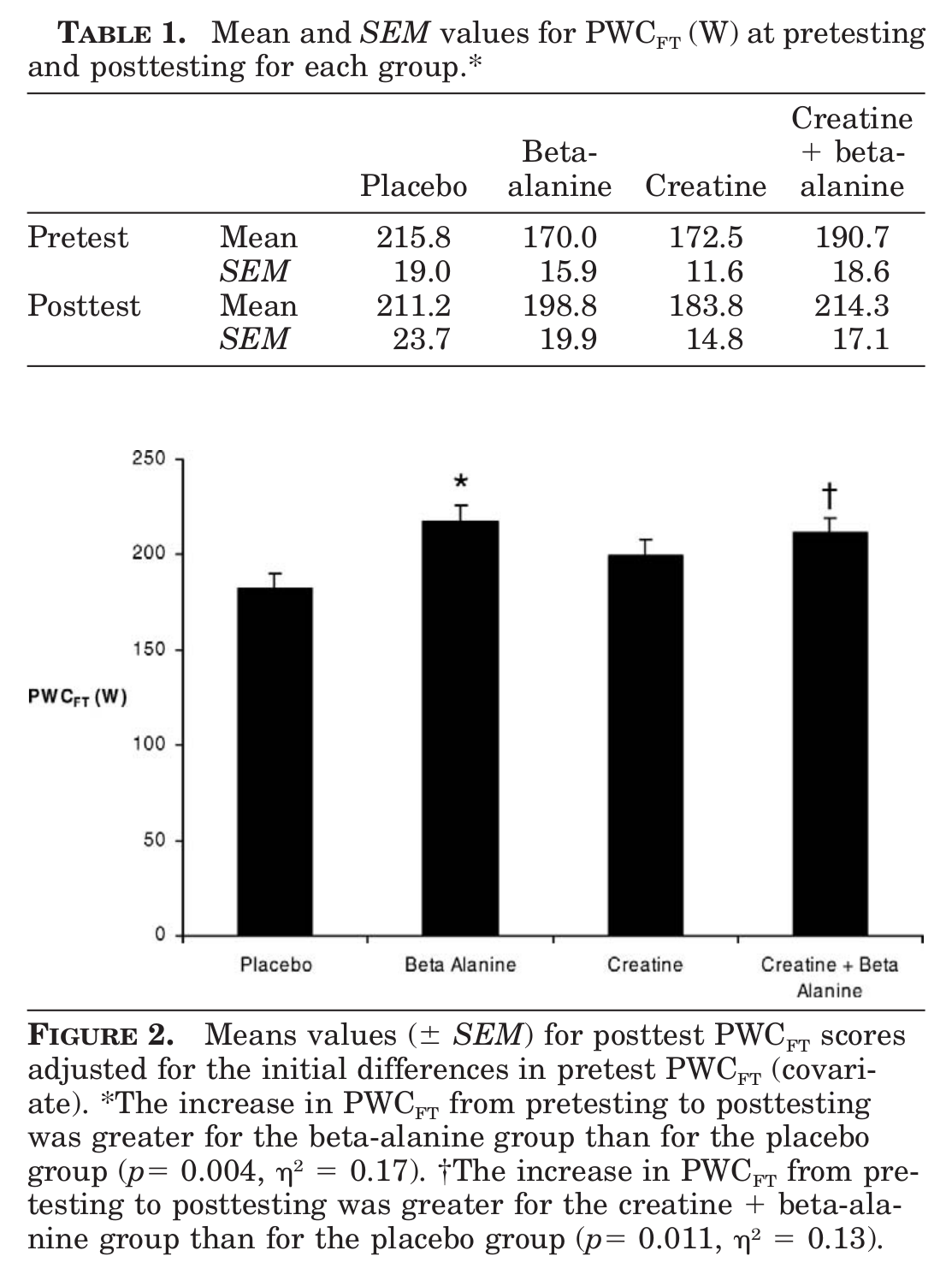
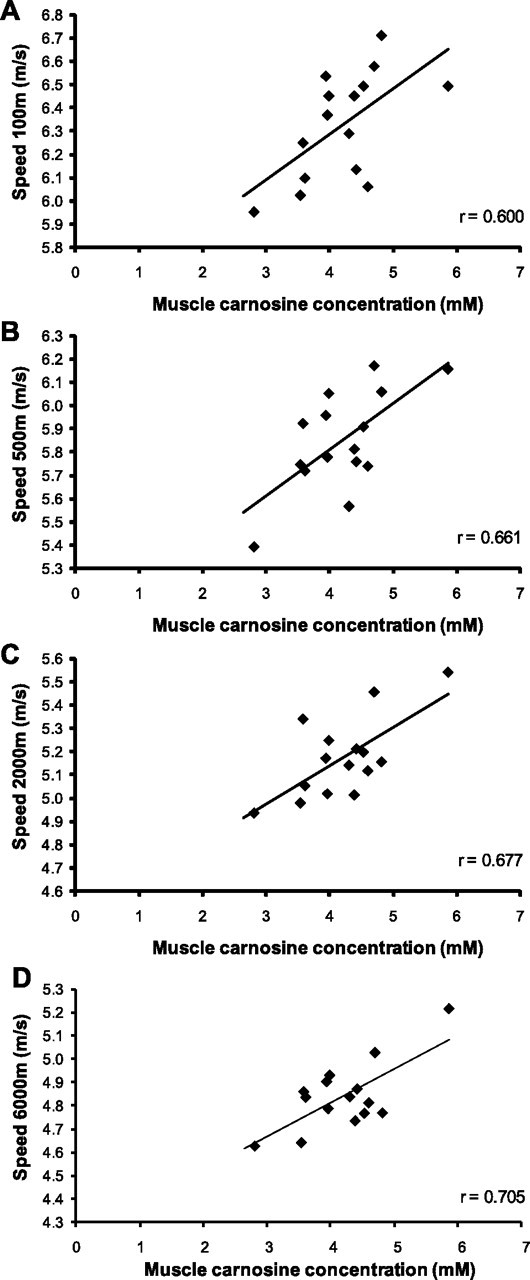

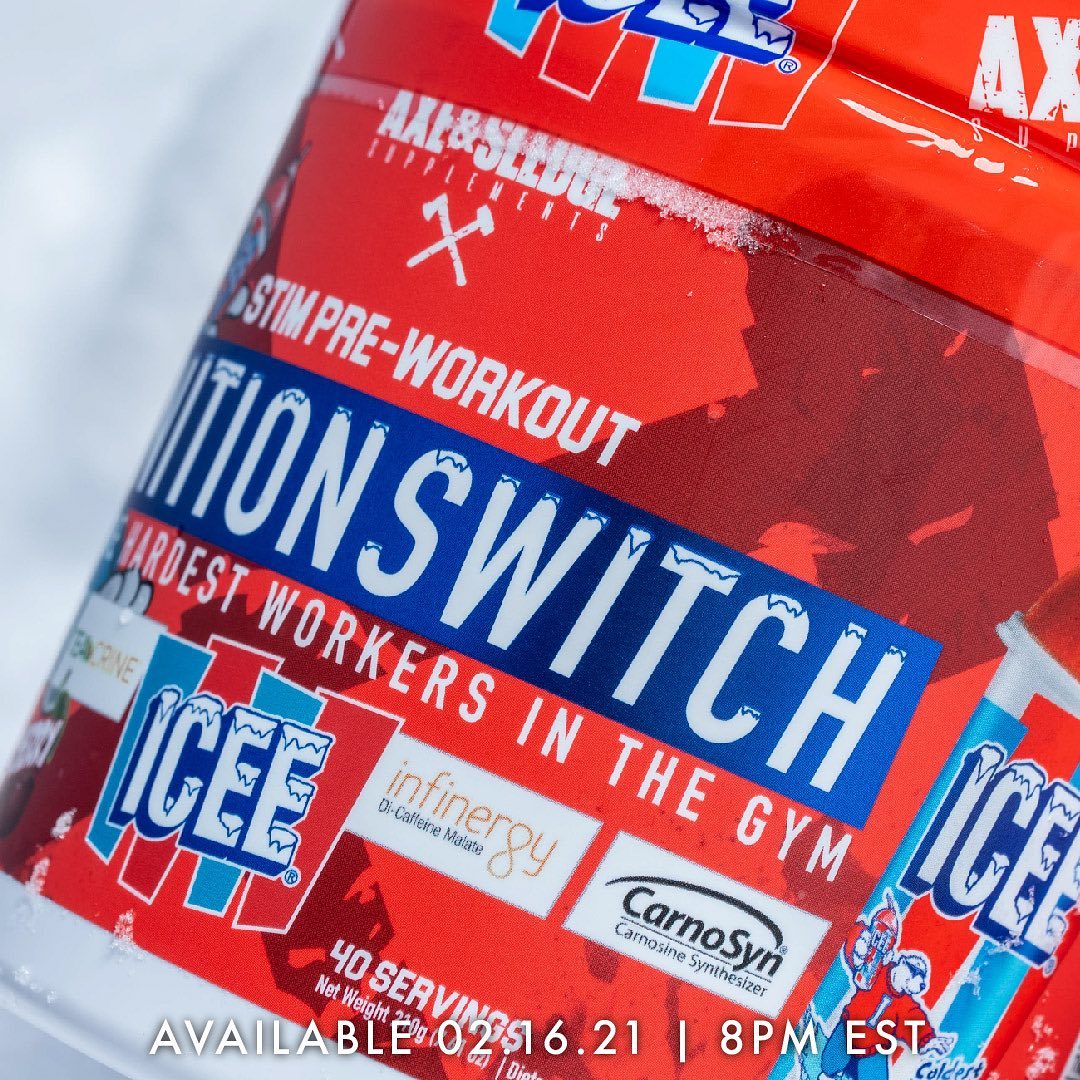


Comments and Discussion (Powered by the PricePlow Forum)